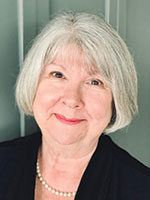BY KATHRYN RUSCITTO, ADVISOR
 My mother has encountered the hospital, rehab and homecare-based workforces over the past several months; it has allowed me to see up close the challenges that have developed in the healthcare workforce. From food service to transportation to nursing, all areas have been impacted. This results in a number of bumps in care delivery for a 98-year-old patient: Lost dentures, lost hearing aids, lost glasses, missed meals, delayed appointment arrivals and delayed bathroom stops.
My mother has encountered the hospital, rehab and homecare-based workforces over the past several months; it has allowed me to see up close the challenges that have developed in the healthcare workforce. From food service to transportation to nursing, all areas have been impacted. This results in a number of bumps in care delivery for a 98-year-old patient: Lost dentures, lost hearing aids, lost glasses, missed meals, delayed appointment arrivals and delayed bathroom stops.
It has made our family more aware and ready to advocate when she need better support. I complained a lot, but this is really not the fault of the organizations and their current workforce; COVID broke our systems and put undue burden on the remaining healthcare workers. Employees are looking for us to do better in finding new approaches to recruitment and training to rebuild their teams.
These workforce issues are also coming at the very time we are seeing a dramatic increase in the age of our community residents. How do we solve these challenges?
I am spending some of my time talking to my foundation and donor contacts and demonstrating that workforce development funding is essential right now. Programs that fund scholarships, training, support entry into the health field by offering day care support to employees while in school and other incentives are desperately needed.
Ultimately, recruiting outside traditional employee segments and reaching out to other countries may be in our future. Syracuse University is working to connect veterans with opportunities, and LeMoyne College is focused on growing nurses, clinical affiliates and the physical therapy workforce. LeMoyne also is retraining foreign-trained health employees through HARC (www.lemoyne.edu/Values/In-the Community/Healthcare-Advancement-Resource-Center).
SUNY Upstate, St. Joseph’s Health and Crouse Health continue growing nursing and medical staffs. In one organization, they have found a shift to part-time positions drew in employees who would not consider full-time work. Remote work for others has helped with backroom operations. Technology is allowing for expertise of one nurse or physician to be spread across many states.
Particularly successful are several demonstrations around the state drawing foreign-born health workers into retraining; others are reaching out to high schools to create work-study slots while still in school with a seamless progression to a job. In talking to Gwen Crosett, founder of Constant Care247 – a provider of home-based care, she said many caregivers never finish nursing school because they are too busy working to keep a roof over their families’ heads.
“Recently, I sponsored a graduate from nursing school who was having a difficult time passing her boards,” Crosett said. “She did not have the money and resources to hire a tutor. ConstantCare247 invested in a tutor, bought her the books and, hopefully, mid-year she will be able to call herself an RN. I feel, as an employer, investing in her success will help all of us in the long run.”
This environment requires unique approaches and creativity to draw new candidates into the health-care workforce. Reaching out to schools, welcoming refugees to our community and drawing retirees back to unique models is in all our futures.






Kathy, thanks for sharing your column. As one who spent over eleven years caring for an elderly parent at home your overview of the needs required in such a capacity were spot on.
Creating the environment necessary to develop a workforce capable of meeting the needs of this expanding field is critical as shown by the numbers of people requiring help.
You offer a roadmap and challenge to meet this fast growing problem. I hope those reading your column will step forward to offer fresh ideas and resources to meet the challenge.